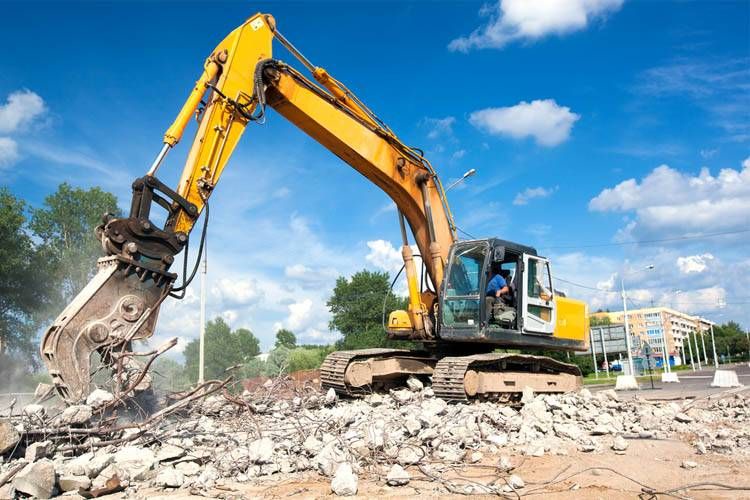Demolition might seem straightforward – tearing down a building to make way for something new. But there's a surprising amount of planning, expertise, and even finesse involved in a safe and successful demolition project. This article decodes the demolition process, guiding you through the different stages from initial planning to final site clearance.
Why Demolish?
There are numerous reasons why a building might undergo demolition. Here are some common ones:
- Redevelopment: Often, outdated or structurally unsound buildings are demolished to make space for new construction projects, like shopping centers, residential complexes, or office buildings.
- Renovation: In some cases, only a portion of a building may need to come down to facilitate a major renovation. For instance, an interior demolition might be necessary to completely revamp the layout of a space.
- Safety Concerns: Buildings that pose a safety hazard due to structural damage, fire risks, or the presence of hazardous materials need to be demolished in a controlled manner to safeguard public safety.
- Environmental Reasons: Demolition can be part of environmental cleanup projects. For instance, structures contaminated with asbestos or lead paint might require demolition followed by decontamination services in Montreal (or any other relevant location) to ensure the site is safe for future use.
Types of Demolition
Demolition isn't a one-size-fits-all process. The chosen method depends on various factors like the size and structure of the building, budget constraints, and environmental considerations. Here's a breakdown of the most common demolition techniques:
- Mechanical Demolition: This is the most widely used method, employing heavy machinery like excavators with hydraulic hammers or shears to break down the building piece by piece. It's efficient for most structures and offers good control over the demolition process.
- Implosion: This dramatic technique involves strategically placed explosives to bring down a structure inwards, minimizing the impact on surrounding areas. Implosion is typically reserved for very large or hazardous buildings due to its complexity and cost.
- Deconstruction: This meticulous process involves carefully dismantling a building to salvage usable materials like bricks, wood, and metal for reuse or recycling. Deconstruction is an environmentally friendly approach but is often more labor-intensive and time-consuming than traditional demolition.
- Selective Demolition: This targeted approach removes specific sections of a building while leaving the remaining structure intact. It's useful for renovations or situations where part of a building can be preserved.
The Demolition Process: A Step-by-Step Guide
A professional demolition project involves a well-defined process to ensure safety, efficiency, and adherence to regulations. Here's a simplified breakdown of the key stages:
- Planning and Permitting: This initial phase involves a thorough assessment of the building, including its structure, materials, and potential presence of hazardous materials. Demolition plans are created, outlining the chosen method, safety protocols, and debris management. Permits are obtained from local authorities to ensure compliance with building codes and environmental regulations.
- Preparation: The demolition site is prepped to minimize risks and disruptions. Utilities like gas, water, and electricity are disconnected and rerouted if necessary. Asbestos abatement or decontamination services in Montreal (or the relevant location) might be required if hazardous materials are present. Traffic control plans are established to ensure public safety during the demolition process.
- Demolition: The chosen demolition method is implemented using the appropriate equipment and safety protocols. Dust control measures are taken to minimize environmental impact. Demolition debris is carefully sorted and separated, with recyclable materials diverted from landfills.
- Site Clearing and Decontamination: Once the demolition is complete, the remaining debris is cleared from the site. In cases where hazardous materials were present, decontamination services might be required to ensure the site is safe for future use. The foundation and any remaining substructures might be removed or addressed depending on the project's overall goals.
- Site Preparation: Finally, the cleared site is prepped for its intended use. This could involve grading the land, backfilling foundations, or installing utilities for new construction.
Demolition Considerations: Safety and Environment
Safety is paramount throughout the demolition process. Demolition companies employ trained professionals who adhere to strict safety protocols to minimize risks of injuries or property damage. Here are some key safety measures:
- Structural Stability: Buildings are meticulously assessed to identify potential hazards and ensure controlled demolition.
- Worker Safety: Demolition crews wear appropriate personal protective equipment (PPE) and follow safety protocols for working with heavy machinery and hazardous materials.
- Public Safety: The demolition site is secured with fencing and signage to prevent unauthorized access. Traffic control plans are implemented to safeguard pedestrians and motorists.
Demolition projects also have environmental considerations. Dust control measures like water misting are used to minimize dust pollution. Debris is meticulously sorted, with recyclable materials diverted from landfills.
Conclusion
Demolition, while often seen as a destructive act, plays a vital role in urban development and environmental cleanup. By understanding the different types of demolition, the meticulous process involved, and the focus on safety and environmental responsibility, you can appreciate the expertise that goes into bringing down a structure in a controlled and responsible manner.
Whether you're a property owner planning a renovation or simply curious about the inner workings of construction projects, this breakdown of demolition services should equip you with a foundational understanding of this crucial aspect of the built environment. Remember, for a safe and successful demolition project, partnering with a reputable and experienced demolition contractor is key. They will guide you through the entire process, ensuring your project meets all safety regulations and environmental considerations.


No comments yet